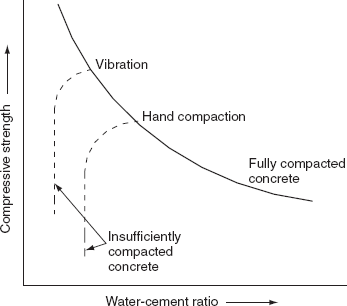Cement and water are the only two chemically active elements in concrete. By their combination they form a glue-like binder paste, which surrounds and coats the particles of the inert mineral aggregates, sets and upon hardening binds the entire product into a composite mass. Next only to cement, water is the most important element in concrete governing all the properties of cement concrete like durability, strength and watertightness.
The functions of mixing water are (a) to damp the aggregates and prevent them from absorbing the water vitally necessary for the chemical combination between cement and water which is called ‘hydration’ (b) to flux the cementing material over the surface of particles of aggregates and (c) to make the concrete workable so that it can be placed easily and uniformly between the reinforcing bars and in the corners.
One of the most recent improvements in concrete manufacture is the control of water in the mixture. The ratio of the amount of water to the amount of cement by weight is known as ‘water–cement ratio’, and the strength of concrete depends on this ratio.

Figure 16.1 Relation between strength and water–cement ratio of concrete
Abram’s water/cement ratio law states that the strength of concrete is dependent upon water–cement ratio, provided the mix is workable. The relation between water–cement ratio and the strength of concrete is shown in Figure 16.1.
It can be seen that lower water–cement ratio could be used when the concrete is vibrated to achieve higher strength, whereas comparatively higher water–cement ratio is required when concrete is hand compacted. In both cases, when the water–cement ratio is below the practical limit, the strength of concrete falls rapidly due to introduction of air voids. The graph showing the relationship between the strength and water–cement ratio is approximately hyperbolic in shape.
Leave a Reply